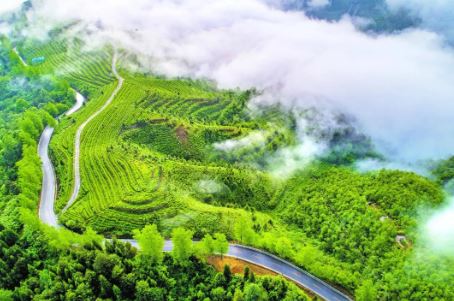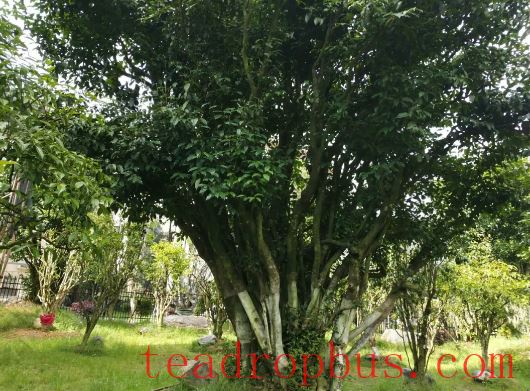The region around 30 degrees north latitude, with a fluctuation of five degrees, seems to be endowed with a mysterious charm by nature, bearing countless breathtaking wonders and mysteries. This area acts as a splendid cultural belt connecting the four ancient civilizations of China, Egypt, Babylon, and India, nurturing the most splendid ancient civilizations in human history.
From the majestic Mount Everest to the unfathomable Mariana Trench, from the enigmatic Egyptian pyramids to the dreamlike Hanging Gardens of Babylon, and on to the chilling Bermuda Triangle, every corner of the 30th parallel north exudes a captivating allure, constantly reminding humanity to respect nature and revere its ways.
In China, the 30th parallel north is also a land filled with marvels. As early as the late Shang Dynasty, this area gave birth to the earliest and most glorious ancient civilization of mankind – the Bronze Civilization. In 1986, the Sanxingdui site emerged in the Chengdu Plain, featuring unique bronze statues that stand nearly three meters tall, considered the pinnacle of the world's Bronze Civilization. This stunning discovery shattered the international historical consensus that Chinese Bronze Civilization was limited to ritual vessels like the Simuwu Square Cauldron and lacked large-scale statues, becoming another unsolved mystery in the annals of world civilization.
Additionally, a series of unsolved mysteries, such as the Yangtze River's intermittent flow and the “Devil's Triangle” of Poyang Lake, have occurred in this mysterious area. Within Taixing County (now Taixing City), Jiangsu Province, the Yangtze River experienced two instances of drought and cessation of flow in 1342 AD and 1954, respectively, only to quickly return to its surging state, the cause of which remains a mystery. On April 16, 1945, the Japanese 2,000-ton transport ship “Kobe Maru” mysteriously sank in the northwest waters of Poyang Lake near Laoyetemple, Jiangxi, with over 200 people on board perishing. Subsequently, all but one of the Japanese naval reconnaissance soldiers sent into the lake vanished under mysterious circumstances. The survivor, Toshio Yamashita, suffered from mental illness. Later, when the renowned American diver Edward Paul attempted to salvage the “Kobe Maru,” several American divers went missing, with only Edward Paul surviving by chance. Since then, this area has been known as the “Devil's Triangle.”

The 30th parallel north not only converges many of Earth's mysteries but is also a significant zone for Tea production worldwide. According to Darwin's theory of evolution by natural selection, this latitude provides an ideal natural environment for tea trees. At the end of the 18th century, the British attempted to cultivate and produce tea to balance trade with China, and Sir Joseph Banks, a famous botanist, clearly stated that the suitable range for growing tea was between 26 and 35 degrees north latitude, identifying the mountainous region bordering Bhutan in northeastern India as the most suitable area on the entire subcontinent for tea cultivation.
In China, tea-growing areas are widespread, extending from Sanya City, Hainan Island (at 18 degrees north latitude) to Lingshou County, Hebei Province (at 38 degrees north latitude). Although advances in planting techniques and changes in climate have expanded tea-growing regions, the majority of famous and high-quality teas still come from two major tea zones around 30 degrees north latitude: the traditional premium tea zone upstream of the Xin'an River and the emerging premium tea zone of the Wuling Mountains. Among these, there are well-known teas such as West Lake Longjing, Biluochun, Junshan Silver Needle, Anhua Dark Tea, Mengding Sweet Dew, Anxi Tieguanyin, and Qimen Black Tea. Therefore, in China, the 30th parallel north is often referred to as the “Latitude of Famous Teas” and is praised as the “Golden Latitude Belt for Tea Production.” During the Qing Dynasty, Yang Fengzao noted, “Currently, the places where tea is produced in China are roughly located between 25 and 31 degrees north of the equator, with the best products coming from between 27 and 31 degrees.”
Among these famous teas, Anhua Dark Tea shines like a brilliant gem in the premium tea zone around 30 degrees north latitude. Anhua is situated between 27°58′54′ and 28°38′37′ north latitude, at the northern end of the Xuefeng Mountains and along the middle reaches of the Zi River. Its unique geology, diverse topography, suitable climate, and excellent ecological environment collectively contribute to the outstanding quality of Anhua Dark Tea.

The unique geology forms the foundation of Anhua Dark Tea. The lands around 30 degrees north latitude are often referred to as the navel of the Earth, with their trace elements, minerals, magnetic fields, electric fields, and gravitational fields having significant impacts on both organisms and the environment. The main soil type in Anhua is “gravelly soil” (commonly known as fire rock soil), derived from the weathering of slate and tillite, accounting for about 71%. This soil is rich in organic matter and contains essential elements for the human body such as iron, zinc, selenium, fluoride, and flavonoids, all within safe standards. For example, the average selenium content in Anhua Dark Tea is 0.22 ± 0.05 ppm, twice the national average for tea and seven times the global average, yet below the international safety standard of 0.3 ppm, making it a moderately selenium-rich health tea.
Diverse topography is the prerequisite for the formation of Anhua Dark Tea. Influenced by tectonic movements and the rotation of the Earth, the topography within the 30th parallel north is rich and varied, with towering mountains and deep valleys. However, only regions at altitudes between 300 and 800 meters are most suitable for the growth of high-quality tea trees. Anhua has numerous mountain ranges, with 29 larger ones and 63 peaks over 1,000 meters in altitude, covering a total mountainous area of 4,600 square kilometers, or 92% of the county's territory. This vast mountainous area provides ideal conditions for the growth of high-quality tea trees.
A suitable climate is the key to the formation of Anhua Dark Tea. Anhua County enjoys a subtropical monsoon climate, characterized by warm temperatures, distinct seasons, water and heat in the same season, warm and humid with abundant rainfall, short cold periods, and long hot periods. Such climatic conditions promote vigorous growth of tea trees, producing larger leaves with rich contents, a high total catechin content, a moderate ratio of polyphenols to amino acids, and excellent taste and nutritional value.

An excellent ecosystem is the guarantee of the quality of Anhua Dark Tea. The geographical advantages, rich topographical features, and suitable climatic conditions around 30 degrees north latitude have created biodiversity. The central Hunan region where Anhua is located is known as the “gene pool of living things” and the “medicine chest of central Hunan.” The forest coverage rate in Anhua is over 76%, with little environmental damage, abundant vegetation, and numerous natural enemies of tea pests, which enhances the disease and pest resistance of tea trees. The biological self-regulation function of tea gardens is well-established, and the tea produced is largely pesticide-free and organic. Furthermore, there is a wide variety of tea trees in Anhua, including shrubs, small trees, and large trees. Especially noteworthy is the large-leaf variety discovered and named in 1960, which is regarded as a precious material resource by tea experts and listed as one of the 21 superior group tea tree varieties in China, becoming a valuable genetic resource for tea production.
The production process of Anhua Dark Tea is equally unique and exquisite. After withering, rolling, piling, and baking, each step embodies the wisdom and efforts of tea farmers. The piling stage is particularly critical in the production of Anhua Dark Tea, where through the action of microorganisms, a series of complex chemical reactions occur, forming the unique quality and flavor of Anhua Dark Tea.
Tasting a Cup of high-quality Anhua Dark Tea, you can